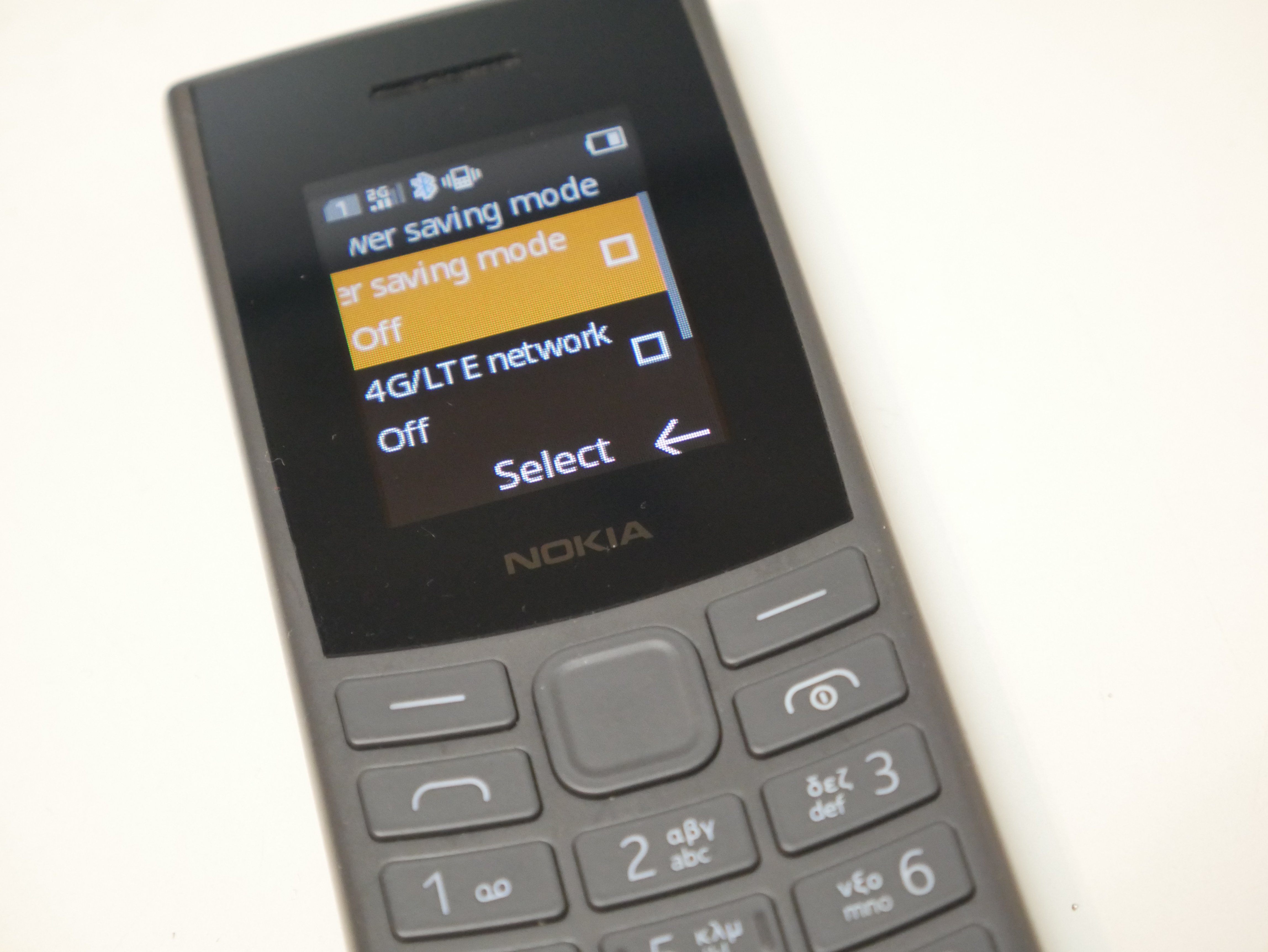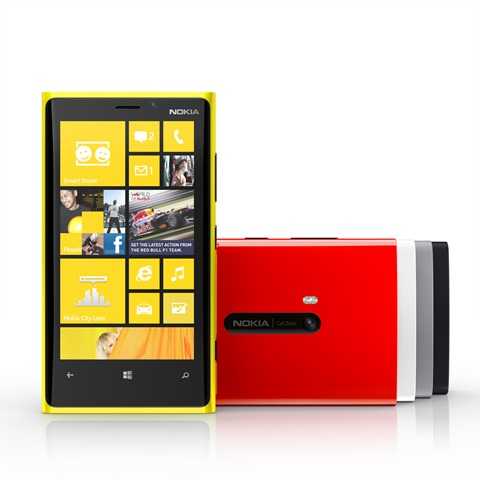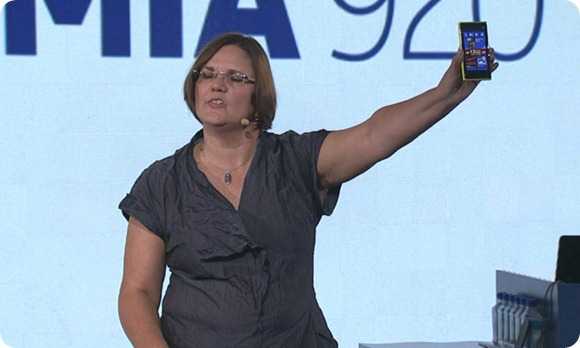The Nokia 105 4G, a new 2023 €40 dumb phone / feature phone, has turned out to be a true breath of fresh air for me. It’s a bargain! Dual SIM, BT headphone support, Voice over LTE and, wait for it…a working browser. If you’re looking for a detox phone, pub-phone, a beach-phone, a Bluetooth MP3 player, an FM radio even, read this review.
Read the full storyTag Archive | "nokia"

Handheld HDR Photography with the Nokia Lumia 925
Posted on 28 October 2013
 I was never a fan of post-processing photos, possibly because I come from the one-chance era where you looked at a large slide projection and knew that most of the skill had gone into the preparation of the shot. Today, of course, it’s much different. We view 600 pixel-wide photos on crappy LCD screens and the image we’re viewing is one of probably 50 that got shot in succession. We view that photo as it passes from bottom to top, our eyes scanning for the briefest hint of something worth stopping at as we scroll. Because of that, processing that photo for an eye-catching effect is a normal part of todays smartphone-based social sharing process.
I was never a fan of post-processing photos, possibly because I come from the one-chance era where you looked at a large slide projection and knew that most of the skill had gone into the preparation of the shot. Today, of course, it’s much different. We view 600 pixel-wide photos on crappy LCD screens and the image we’re viewing is one of probably 50 that got shot in succession. We view that photo as it passes from bottom to top, our eyes scanning for the briefest hint of something worth stopping at as we scroll. Because of that, processing that photo for an eye-catching effect is a normal part of todays smartphone-based social sharing process.

Nokia Lumia 920 – Is it worth 600 Euros?
Posted on 26 September 2012
Update: Nokia PR Europe say they think it’s too early for this question. I can only interpret that in one way; There’s a possibility that the official MRRP for the Lumia 920 is lower than the price we’re discussing here. True, distributors may have been given indicative pricing and launch pricing could be lower. For those wanting to pre-order though, the question is valid.
Update2: Nokia PR Europe also suggest to me that one should test a device before evaluating. True if you have that luxury and clearly the sensible choice would be to wait until launch or retail-package reviews. We’ll certainly put another opinion forward when we’ve tested further!
Pre-order for the Nokia Lumia 920 is now available in Europe with most retailers settling on 599 Euros after tax. That puts it up there as one of the most expensive phones you can buy. More expensive than a Galaxy S3, iPhone 4S, Galaxy Note and the HTC Windows 8 Phone. It’s more expensive than the Nokia 808 PureView was at launch. Prices will start to drop as more retailers jostle for position but don’t expect too much. The PureView, a device that has seen some discounting, is still only 50 –70 Euro cheaper than at launch. Is it worth it?
The value-for-money equation is one that can only be completed by you so you’ll have to decide but for me, I’m a little worried that it’s over priced. I certainly don’t see myself handing over 600 Euros for the Lumia 920.
Let’s look at some of the features…

Floating Lens Technology Debuts in Nokia Lumia 920
Posted on 05 September 2012
I posted just half an hour ago on Google Plus…
“Stabilisation is a huge challenge for cameraphones because there’s not enough processing power to do it well enough in software and no room for optical stabilisation.”
Nokia may have solved the problem with “Floating Lens Technology” on the Nokia Lumia 920.
Technical details are unavailable right now but I’m excited to see that as it will a) allow slower shutter speeds (more light) b) reduce the need for xenon flash to freeze motion c) allow for longer zoom d) reduce video bitrates.

First thoughts: 24hrs with the Nokia 808 PureView
Posted on 30 August 2012
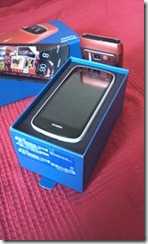 It arrived just as IFA was starting yesterday but in between frantic posting over at Ultrabooknews I’ve had at least a few hours with the Nokia 808. I even took a rare early morning ride out on the bike to do some testing today.
It arrived just as IFA was starting yesterday but in between frantic posting over at Ultrabooknews I’ve had at least a few hours with the Nokia 808. I even took a rare early morning ride out on the bike to do some testing today.
Ever since that ride I’ve been mulling over the 808 and its target audience. Talk about niche device, the 808 isn’t even priced as accessible right now so for anyone looking at connected photography, it’s quite an out-there choice. As the Symbian fan-base dwindles, I think we need to be honest and say that the 808 is unlikely to be as popular as the N8.
I won’t talk much about Symbian, the operating system, here. It beats most camera operating systems for usability and features but in comparison with phones that are half the price it’s less than dynamic. It does, I agree, do a great job with the basics. The phone is high quality, the MP3 player is great, build quality seems good and the screen is bright. The built-in free navigation and maps are still, in my opinion, better for in-car use than most other on-phone solutions.
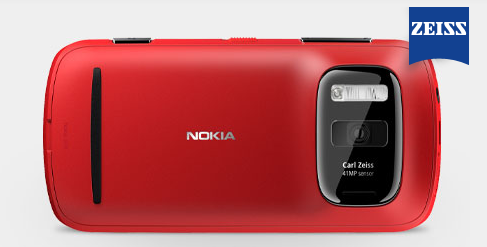
Nokia 808 PureView has a 41MP Camera, Announced After 5 Years of Development [video]
Posted on 29 February 2012
 At MWC, Nokia has announced the 808 PureView, a Symbian powered phone with a massive 41MP camera. It’s been said in the past, ‘never judge a camera by its megapixels’, but here we might have to make an exception.
At MWC, Nokia has announced the 808 PureView, a Symbian powered phone with a massive 41MP camera. It’s been said in the past, ‘never judge a camera by its megapixels’, but here we might have to make an exception.
httpv://www.youtube.com/watch?v=kgdqobgzb0E
With 41MP and classic Carl Zeiss optics, you can do some awesome stuff that you wouldn’t be able to do otherwise with a smartphone camera. You probably won’t want to simply snap 41MP photos (though I hope that’s an option), which would be somewhere in the neighborhood of 7728×5368 resolution, however, such a huge sensor allows you to have a useful digital zoom that doesn’t deteriorate the quality of the photo or video. Nokia says that they’ve tried to work costly and complicated analog zoom mechanisms into smartphones and found that it simply wasn’t practical. In addition to high quality digital zoom, oversampling is used in which all of the extra pixels better inform individual pixels of what color and luminosity they should be; this increases sharpness and reduces noise, and the result is a standard 5MP photo. If you’re a camera buff and want to get into the technical details, Nokia has a whitepaper for the PureView technology which gets down to the specifics.
All Things Digital has a nice concise piece about PureView in which Nokia says they’ve been working on the technology in secret for 5 years.
While the 808 PureView is a Symbian powered phone, Nokia says that the technology will eventually find its way into the Windows Phone 7 platform. Nokia has an 808 PureView micro-site available here which gives a good high-level rundown of the advantages of the technology. You can see sample shots taken with the 808 PureView here as well.
I’ve seen no indication of a Nokia 808 PureView release date or price at this point, and it’s doubtful that you’ll ever be able to get your hands on it in the states — until the technology hits Windows Phone 7, that is.
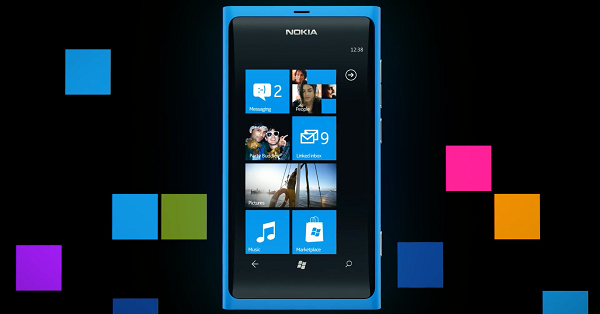
Nokia: More Relevant in the US Than Ever (Maybe)
Posted on 04 November 2011
 Nokia has only been relevant for me once in my smartphone life, and that was when I was overseas. Since returning stateside, I have not given Nokia news more than a miniscule glance as I pore over the day’s tech reports. In fact, I have not honestly cared about a Nokia phone release since the mid-90s, when they were one of the top name brands in the US. Until this year that is. Nokia has become relevant again, although not quite in the way that you might think. And while their partnership with Microsoft may be doing a little-bit to correct their sky-diving financial position, I question whether Redmond is doing the best thing overall for increased adoption of Windows Phone.
Nokia has only been relevant for me once in my smartphone life, and that was when I was overseas. Since returning stateside, I have not given Nokia news more than a miniscule glance as I pore over the day’s tech reports. In fact, I have not honestly cared about a Nokia phone release since the mid-90s, when they were one of the top name brands in the US. Until this year that is. Nokia has become relevant again, although not quite in the way that you might think. And while their partnership with Microsoft may be doing a little-bit to correct their sky-diving financial position, I question whether Redmond is doing the best thing overall for increased adoption of Windows Phone.
 Before we continue on with the editorial, let’s hit some of the facts of the last week’s announcements. At Nokia World 2011, Nokia introduced two phones that are expected to eventually make their way to US carriers. They are the Nokia Lumia 800 and 710. The latter has a 3.7 inch display with a resolution of 480×800, a 5MP camera that can shoot 720p video, weighs in at 4.4 ounces, has 8GB of flash storage, 512MB of RAM, runs on the Qualcomm MSM8255 chip, which is a 1.4GHz single-core CPU, and communicates on GSM bands.
Before we continue on with the editorial, let’s hit some of the facts of the last week’s announcements. At Nokia World 2011, Nokia introduced two phones that are expected to eventually make their way to US carriers. They are the Nokia Lumia 800 and 710. The latter has a 3.7 inch display with a resolution of 480×800, a 5MP camera that can shoot 720p video, weighs in at 4.4 ounces, has 8GB of flash storage, 512MB of RAM, runs on the Qualcomm MSM8255 chip, which is a 1.4GHz single-core CPU, and communicates on GSM bands.
The Lumia 800 also has a 3.7 inch display, a high resolution 8MP camera, weighs in at 5 ounces, has the same 480×800 resolution on an AMOLED display with Gorilla Glass, 16GB of storage and 512MB of RAM, and an identical processor…in fact, much between the two phones is identical.
Back to the editorial. There are a few things I see as positive about Nokia-Soft’s announcements. Kudos to them for getting the product out on time. We did not need another smartphone-delay storyline to track across months of PR apologies. And the big thing? People are talking about Nokia again, and not only in negative terms. At least not entirely.
Nokia needed to hit one of the park last week at Nokia World, but there are a few areas where these announcements fall well short of that. The announcement of these two phones, to me, is more like a “we’re still hanging in there inch level of effort. It feels very analogous to the Palm Pre release, which offered some compelling potential. But from the announcement of the Pre through the first several months up to release, I felt like I was watching a once great boxer taking jabs in the ring, wobbling, unable to put his hands up and protect himself, but still able to remain standing and even dodging a jab from time to time. But I knew that the other guy was eventually going to land a haymaker that the former champ would just not be able to take.
I get the same sense from the Nokia announcements last week. Maybe the better analogy would be watching a once great boxer through the last few bouts of their career. They keep losing, but in each bout there is a round or a few moments when you think they are on the road back, before they finally succumb each time. While the Lumia product line shows promise, and seems to offer a steady, work-horse level device, neither of the two devices are game-changers. Nokia is in the same position that Android tablet-makers are. They cannot afford to bring a device or devices that are within arm’s reach of the current benchmark products, and offer them at the same price. While there is no pricing information on either of the Lumia devices, I cannot see them being offered at less than $199 and $149 price points for the 800 and the 710 respectively. I believe this based on the pricing of Nokia’s handsets in the past within North America, and the fact that, for some reason, they have struggled to land on carriers with subsidized prices. The Nokia Astound debuted back in April on T-Mobile at one of the most affordable release prices for a Nokia smartphone in North America ever — $79.99. But I do not see Nokia being able to match that pricing for either one of these phones. If they come out at or near the same $199 price point as many premium Android handsets or the $199 iPhone 4S model, when the Nokia phones do not have front-facing cameras or equally high resolution screens, their ability to compete will be sorely lacking.
If Nokia can get the Lumia 710 down to a $99 price point, and slug it out against low-end Android phones, then maybe this maneuver has a chance of gaining traction. As for the Lumia 800, I expect it to come out at $199, and likely on T-Mobile as I do not see AT&T having a lot of interest in this device. So it will go to the smallest of the big four US carriers. But it will also be on the one carrier that does not have the iPhone, so for its current customers who enter the market for a new phone, it could very well be a viable choice. I was on an HTC HD7 on T-Mobile at the beginning of the year and was very happy with that selection. But right now, the only thing Microsoft seems to be touting as the differentiating, breakout feature of Windows Phone is Xbox Live integration [ed. note: that integration is majorly lacking and painfully bolted-on]. This was a nice hook at the beginning of the year, but the Xbox is six years old now, and even as a gaming platform, its pre-eminence as being a new place to go is not as shiny as it once was. As for hardware, Nokia phones have always been appealing to photo buffs for their excellent cameras. But great photos and Xbox Live are not enough to bring Nokia back to relevance in the US.
Overall, this does not feel like the mass offensive that it needed to be. Nothing out of this announcement was anything that was not entirely predictable. At the end of the day, it feels like less than what Nokia needed to do to right its burning platform. These are not devices that will save Nokia’s bacon. Nor is it indicative of a strategy that shows a glimmer of things to come that will make sweeping changes in Nokia’s business position within the market. Nokia seems to have generated much more buzz about their one-off Meego phone, the Nokia N9, than their just-announced Lumina series (though it may still be too early to call).
While falling short of what is needed, I also felt like Microsoft and Nokia weakened Microsoft’s position with its other hardware partners. If I were HTC or Samsung, I would have had sharp words the following day over the use of statements that proclaimed the Lumia line as the “first real Windows Phone(s)”. The hardware manufacturers that stepped out with Microsoft for the launch of Windows Phone, at very high risk to their own earnings, should not have suffered the suggestion that their efforts and their hardware designs were of little value. While not all CEO’s make decisions out of spite, I think the Microsoft and Nokia statements would have at least caused me to ask my CFO for the most recent accounting statements on my Windows Phone product line to evaluate how much value-adding it was really providing.
Microsoft took a risk when it migrated its smartphone strategy away from an Enterprise-focus to a consumer-centric one. Without the old corporate in-roads to lean on, they now have to compete in the same arena with the same rule-set as the iPhone and Android products. I do not see the Lumia has being a huge crowbar in that battle. I like Windows Phone, and would not have a problem selecting it as one my next devices. But I still do not see the operating system, the ecosystem, or the new Nokia devices as converging recommendations that I would give to non-techy customers looking for advice on their next smartphone, or first-time smartphone buyers. It is not clear to me where Microsoft and Nokia are heading in terms of starting an offensive that will lead to all of this increased market-share that so many analysts are claiming Windows Phone will achieve in 2014/2015.
The Lumia devices appear to be beautiful hardware, and I thoroughly enjoy Windows Phone 7 when I use it. But this is about what Microsoft and Nokia are doing to convince the consumer population that is not already on their side that the Nokia devices are viable and competitive alternatives to the iPhone and premium Android devices. Based on last week’s event, I am having a hard time convincing myself that the two companies have done enough. This smells very much like the Palm Pre launch (except for fact that Nokia’s phones appear to be arriving on time as promised). Microsoft and Nokia will need to come in at lower price points than the competition, and quickly get to offering compelling, differentiated features and offer unique service partnerships to compete against Apple and Google. Seeing as how it appears that they have missed those targets within this window of opportunity, I am not sure when they can pull this trifecta off before suffering that aforementioned haymaker that could be in the works. An iPhone 5 announcement in the spring, or arrival en masse of Ice Cream Sandwich phones could quickly push Nokia off the stage of relevance if they and Microsoft cannot push some major offensive in the interim. Oh, yeah, and after scoffing at everyone else’s Windows Phone devices, I would not expect help to arrive from the camps of HTC and Samsung anytime soon.
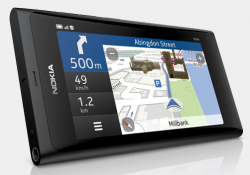
The Anticipated Nokia N9 Not Launching in the US… Perhaps Ever
Posted on 09 August 2011
 All I can say right now is “wow”. The Nokia N9 is the only high-end phone from Nokia that has drummed up significant interest and anticipation for some time now. Recent information indicates that it may not even launch in the US.
All I can say right now is “wow”. The Nokia N9 is the only high-end phone from Nokia that has drummed up significant interest and anticipation for some time now. Recent information indicates that it may not even launch in the US.
The US certainly isn’t the only country in the world, contrary to the belief of some, but I’ve personally seen lots of people here who are more than excited by the Nokia N9, even if it is at severe risk of poor after-sale support.
Now Nokia says that the N9, which is expected to launch on the 23rd, isn’t currently planned for for the US, and may never find its way to US shores:
“After the very positive reception to the launch of the Nokia N9, the product is now being rolled out in countries around the world. At this time we will not be making it available in the US. Nokia takes a market by market approach to product rollout, and each country makes its own decisions about which products to introduce from those available. Decisions are based on an assessment of existing and upcoming products that make up Nokia’s extensive product portfolio and the best way in which to address local market opportunities.”
I’m sure I don’t have to tell you that this is upsetting as someone living in the US, but this has implications outside of the country as well.
The fact that the N9 will only be launching in a limited number of countries means less people with their hands on the device which means a smaller demographic for developers. This is bad news for the platform as a whole. If developers don’t’ have a large demographic for which to develop and sell, it’s unlikely that the device will ever reach a critical-mass of applications that, in this day and age, are key to the success of mobile devices.
Whatever Nokia has up their sleeves for a new high-end device, it had better be pretty awesome, otherwise people will be mighty disappointed.
Engadget is the source of this information, and they’ve got a few links for additional reading that might want to check out. Go have a look!
 |
| |||
 |
| |||
 |
| |||
 |
| |||
 |
| |||
 |
| |||
 |
| |||
 |
| |||
 |
| |||
 |
|

